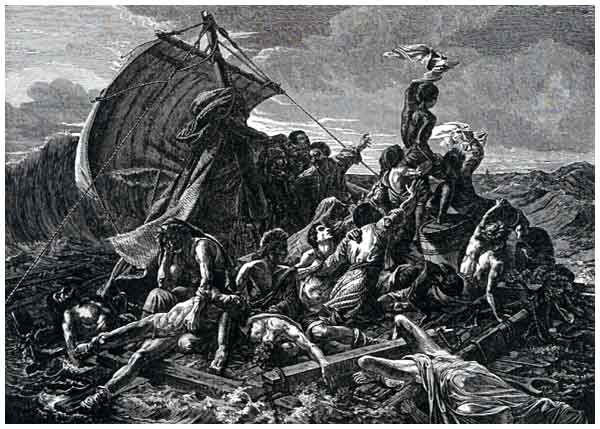 |
 |
 |
|
|
The Raft of the Medusa
From the painting by Jean-Louis-Andre-Theodore Gericault.
|
...introduction continued; JEAN-LOUIS-ANDRE-THEODORE GERICAULT,
born at Rouen, in 1790, and dying prematurely at Paris, in 1824, has
been credited with giving by his picture, "The Raft of the Medusa"
an impulse, through its effect upon Eugene Delacroix, to the Romantic
movement in painting. This picture was first exhibited in the Salon
of 1819, five years before the famous Salon of 1824, where the works
of Constable made such an impression upon the French artists. It had
been painted hastily in the foyer of the Theatre Favart, just after
Gericault's return from Italy, and it was natural that it should make
a commotion among the artists, so long accustomed to the choice of subjects
drawn from classic mythology, and the histories of the Greeks and Romans.
But as in the case of the "Marcus Sextus" of Guerin, there
was a reason apart from the picture itself, viewed as a work of art,
which must be taken into account in reading of the interest it excited.
It was looked upon, by the party in opposition, as a document proving
the folly of a Government that distributed its honors and offices among
incompetent people, as rewards for political services, or as mere social
distinctions. The wreck of the Medusa frigate was laid at the door of
the ministry, charged to the incompetence of the captain; and to this
political significance must be added the violent reaction already on
foot among the younger artists against David and his school. This reaction
was in itself partly political. Society, under the restored Bourbons,
was not likely to be friendly to the teachings of a man who had signed
the death-warrant of their King, had been the friend of Marat, and had
worshipped the rising sun of Napoleon, and been faithful even to his
fallen fortunes. continued... |
